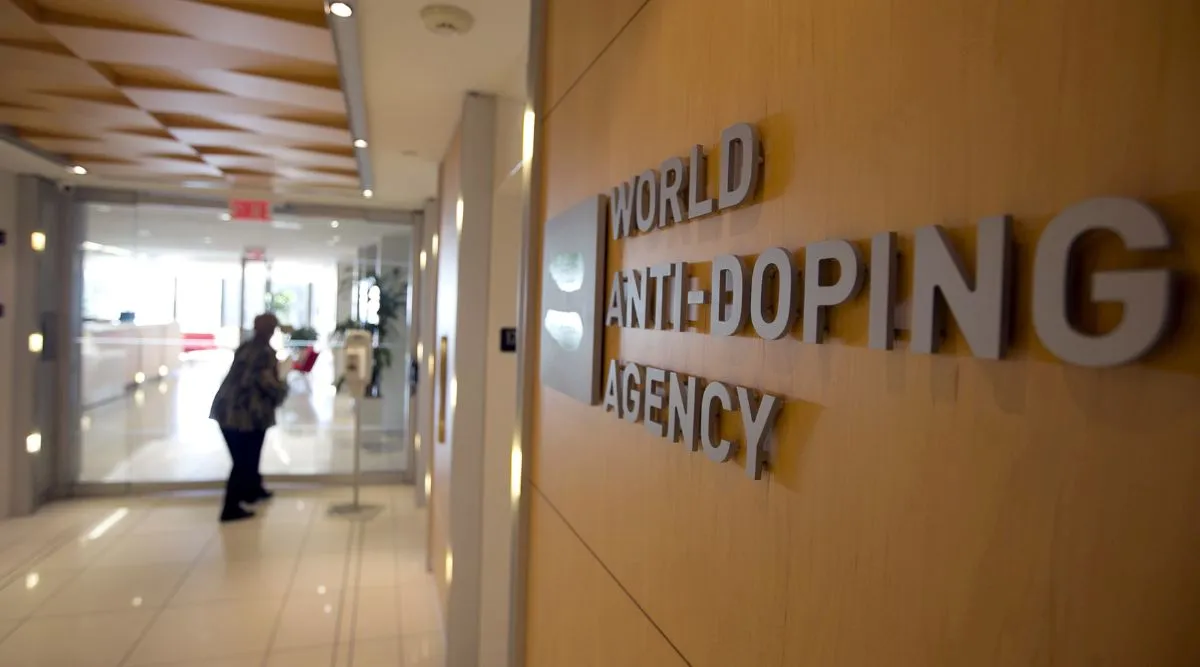Description

Copyright infringement not intended
Picture Courtesy: https://indianexpress.com/article/sports/sport-others/wada-exposes-nada-misdoings-missed-dope-tests-faulty-system-whereabouts-failures-8847154/
Context: A new report by the World Anti-Doping Agency (WADA) reveals that India has the highest number of anti-doping violations (positive tests) in 2022.
Details
- The issue of doping in India, as highlighted by the World Anti-Doping Agency (WADA) report and discussed by sports officials, reveals a concerning trend that needs to be addressed comprehensively.
Doping Statistics and Rankings
- India conducted testing on 3,865 samples in 2022, which included urine, blood, and dried blood spot (DBS) samples. Out of these samples, 125 returned Adverse Analytical Findings (AAFs), indicating a significant percentage of 3.2% of AAFs.
- India stands out as the only country with over 100 positive results, surpassing countries like China, the USA, and Russia in terms of AAFs despite testing fewer samples.
Comparison with Other Countries
- Countries like China, the USA, and Russia conducted testing on a larger scale (e.g., China tested 19,228 samples) but reported fewer AAFs, highlighting discrepancies in doping prevalence.
- Germany and Russia, testing over 10,000 samples each, reported relatively higher numbers of positive cases (Germany: 42 positives, Russia: 85 positives) compared to India.
WADA's Observations
- WADA reported a 6.4% increase in the total number of samples analysed in 2022 compared to the previous year.
- The percentage of Adverse Analytical Findings (AAF) also rose from 0.65% in 2021 to 0.77% in 2022 globally, indicating a growing concern and the need for enhanced anti-doping measures.
|
World Anti-Doping Agency (WADA)
●The World Anti-Doping Agency (WADA) is a foundation established to lead the global effort in the fight against doping in sports.
●WADA was initiated by the International Olympic Committee (IOC) and was officially created in 1999, in Lausanne, Switzerland, following the "Declaration of Lausanne."
●Its primary goal is to promote, coordinate, and monitor efforts to combat drug use in sports globally.
●WADA's headquarters have been located in Montreal, Quebec, Canada, since 2002, with regional offices in Europe, Africa, Asia/Oceania, and Latin America.
●WADA collaborates with organisations like the Council of Europe and UNESCO to promote international standards and regulations against doping.
●The UNESCO International Convention Against Doping in Sport, ratified by 189 states, provides a legally binding framework for governments to align their domestic policies with the World Anti-Doping Code.
|
Root Causes and Contributing Factors
- A former Chief Medical Officer at the Sports Medicine Centre of SAI, highlights underlying factors such as financial incentives and aspirations for government jobs among junior athletes, leading them to resort to doping.
- The pressure to excel in sports and achieve quick success may incentivize athletes to take shortcuts through doping, undermining fair play and ethical sportsmanship.

Incidents and Trends
- Previous incidents at events like the Khelo India School Games and the Delhi State Athletics Meet reveal instances of doping among young athletes, including gold medalists.
- Athletics, weightlifting, and wrestling emerged as sports with significant doping cases, as per the NADA report, underscoring specific challenges within these disciplines.
Response from Athletics Federation of India (AFI)
- AFI acknowledges doping as a serious issue and emphasises increased testing efforts as a reason for detecting more AAFs.
- AFI's commitment to education and awareness among athletes highlights the importance of preventive measures and ethical guidelines in sports.
|
The AFI is the national governing body for track and field athletics in India. Established in 1943 (originally named Amateur Athletic Federation of India), it's responsible for organising national competitions and is affiliated with international organisations like World Athletics and the Asian Athletics Association.
|
Education and Awareness Initiatives
- Education and awareness campaigns at the grassroots level are identified as key strategies to combat doping, instilling values of integrity and fair play among young athletes.
- Continued efforts to educate athletes about the consequences of doping and promote clean sportsmanship are essential to address the root causes of the problem.
Conclusion
- Addressing the challenge of doping in Indian sports requires a multi-faceted approach involving stringent testing, education, and awareness initiatives, alongside ethical governance and policy interventions. Collaborative efforts from sports organisations, government agencies, medical professionals, and educational institutions are crucial to fostering a culture of clean and fair sports in India.
Must Read Articles:
NATIONAL ANTI-DOPING AGENCY (NADA)
SPORTS GOVERNANCE IN INDIA
Source:
BUSINESS-STANDARD
|
PRACTICE QUESTION
Q. Doping scandals have tarnished the image of Indian sport. Analyse the effectiveness of the current anti-doping framework in India. What challenges does it face, and how can the governance structure be strengthened to create a culture of clean sport and deter doping practices?
|









